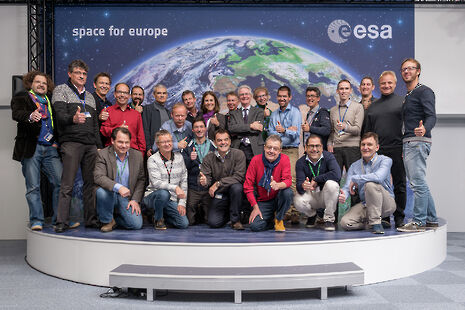There are stormy seas ahead for science
Jon Wall suggests that the politics of 2016 present significant challenges for the established patterns of scientific research

While there have been numerous breakthroughs and discoveries over the past year, including those profiled in this week’s issue, perhaps the most significant events for science are those which have caused shockwaves on the political scene.
Regardless of your opinion on whether Brexit or Trump were predictable, inevitable, positive or cataclysmic, it is clear that the scientific community was not expecting these developments. The scientific community arguably has more to lose from these political developments than many other sectors.
Science has become an inherently globalised field of human activity over the last 50 years, largely because, since the Second World War, the field has become bigger in all aspects. New universities sprung up and generated many new trained scientists; the scale of equipment needed to do scientific research increased exponentially, and of course the new sprawling scale of this so-called big science required more substantial financial investment. The way in which science has progressed has largely depended on this financial investment coming from governments and industry, across national borders. The most oft-cited example of this is CERN, the pan-European centre for nuclear research. It was the CERN-built Large Hadron Collider that discovered evidence for the Higgs boson particle, perhaps the most profound discovery of this century so far. This was only possible because of the cooperation between scientists across European nations (as well as some further abroad).
However, this is still not the full story. Over the past few decades, a scientific infrastructure has grown up which is essentially international. In the case of European science, much funding is allocated at the continental level, which generally favours research groups comprising staff across different European institutions. Internationally, collaborations extending around the world are often more successful than those based solely in one nation. For example, the international connections of the High-Z team (Chile, Australia, America and Europe) enabled them to gain time using powerful telescopes based in these locations in order to find supernovas, leading to profound discoveries about dark matter, the fabric of the universe.
What is clear is that this international infrastructure is threatened by the anti-globalisation trends seen over the last year. Donald Trump has gained support by attacking scientific progress, including through his well-established positions denying climate change and opposing vaccinations. In the weeks since his election win he has already appointed an anti-science lobbyist, Myron Ebell, to head his transition team for the Environmental Protection Agency, as well as threatening to cut NASA’s funding for climate science.
These positions are misinformed and dangerous, preventing scientists from making progress and disseminating it to the world. Closer to home, Brexit carries a number of threats for science, as Varsity suggested in the lead-up to the vote. The nature of European science funding means that UK institutions receive substantial funding from the EU. This is likely to be lost.
More pressingly, the numbers of foreign scientists working in the United Kingdom are likely to plummet as visa rules are tightened and free movement is curbed or abolished. The language of science is universal, and the trend towards closing nations off can only serve to slow progress through decreased collaboration and the potential duplication of research.
The growing globalisation of science, which has generated faster progress in scientific research than ever before, faces challenges in light of the political results of 2016. Stormy seas lie ahead indeed
 News / Cambridge academics stand out in King’s 2026 Honours List2 January 2026
News / Cambridge academics stand out in King’s 2026 Honours List2 January 2026 Interviews / You don’t need to peak at Cambridge, says Robin Harding31 December 2025
Interviews / You don’t need to peak at Cambridge, says Robin Harding31 December 2025 Comment / What happened to men at Cambridge?31 December 2025
Comment / What happened to men at Cambridge?31 December 2025 Features / “It’s a momentary expression of rage”: reforming democracy from Cambridge4 January 2026
Features / “It’s a momentary expression of rage”: reforming democracy from Cambridge4 January 2026 News / AstraZeneca sues for £32 million over faulty construction at Cambridge Campus31 December 2025
News / AstraZeneca sues for £32 million over faulty construction at Cambridge Campus31 December 2025









